How long is a katana handle (Tsuka) and parts breakdown
Table of Content
1. Introduction

The katana, a symbol of strength, precision, and Japanese martial tradition, is immediately recognizable with its distinctive curved blade and sleek design. As powerful and fearsome as the blade might be, it is the handle, or tsuka, that gives the wielder control over this formidable weapon. The handle plays a pivotal role in ensuring the perfect balance and maneuverability of the katana during combat or practice.
There are many types of Katana, because katana is a general term for all Japanese swords. In this article we will discuss about the most common one, Uchigatana, which is the katana most people recognize
2. How long is a Katana Handle?
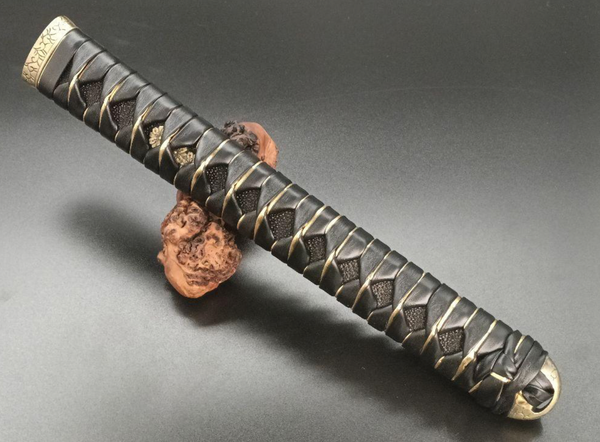
Katana is a two handed sword, and the weight of a katana isn't light, so the handle of a katana must be long enough to accommodate two palms . The Katana handle typically measures between 10 - 12 Inches ( 25 and 30 cm ) in length, the blade is usually 60 cm or longer. Thus, the handle is roughly 30% of the total length of the katana. This proportionate design aids in achieving balance, granting the user better control and precision.
While these measurements are average, it's important to note that katana handles can vary. Traditional katanas often stick to the aforementioned dimensions, but for those custom katana, the handle length can be adjusted to fit personal preferences or specific martial arts requirements.
3. Katana Tsuka Parts Introduction:
A katana's handle is not just a singular piece but a composite of several components, each playing its unique role:
Fuchi: The collar located at the top of the handle, right next to the guard. It provides a seamless transition between the tsuka and the tsuba (guard).
Kashira: The pommel or end cap of the handle. It helps in keeping the tsukaito in place and complements the design of the fuchi.
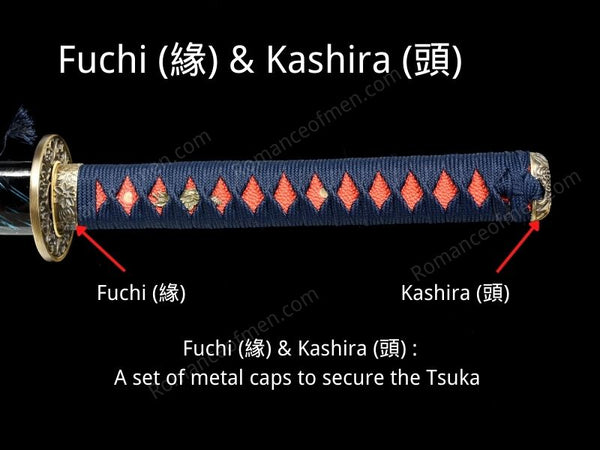
Samegawa: This is the ray skin wrapping that lies beneath the tsukaito. It offers an extra layer of grip and is a distinct feature in traditional katanas.
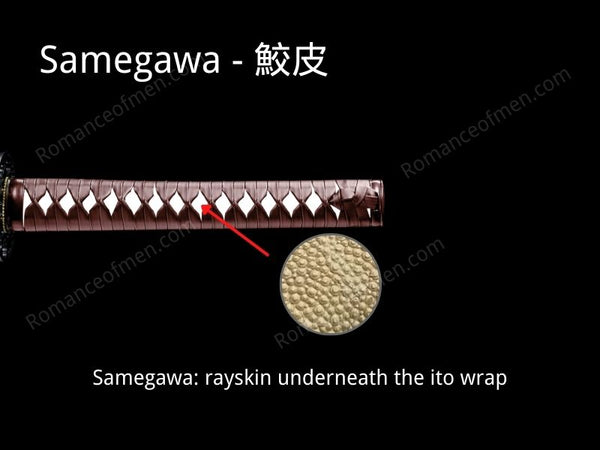
Tsukaito: The cord wrapping that goes over the samegawa. It’s typically made from silk, cotton, or leather and provides grip while also being decorative.
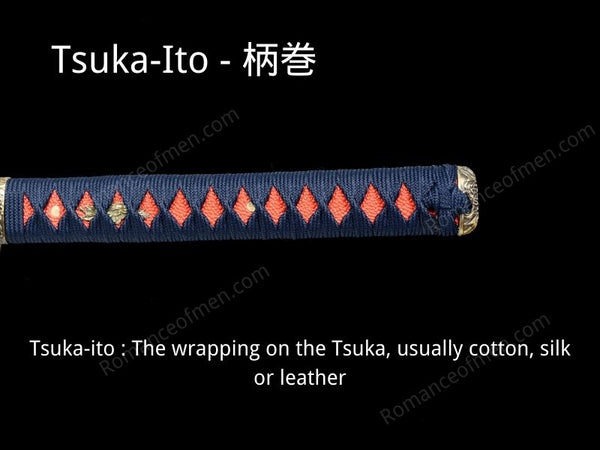
Menuki: Small ornamental pieces placed under the tsukaito at strategic points. They not only serve a decorative purpose but also improve the grip.
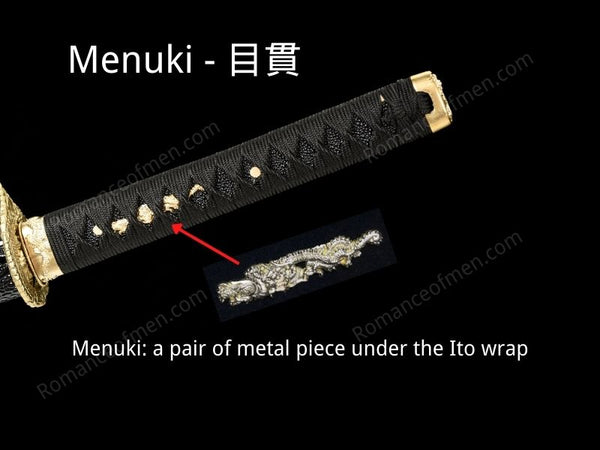
Mekugi: Bamboo pegs or pins that secure the handle to the blade. They can be removed to disassemble the katana for cleaning or maintenance.

Nakago: Not exactly a part of the handle but rather the tang of the blade that extends into the handle. The mekugi pins pass through the nakago to hold the tsuka securely in place.

4. Conclusion
A katana is a masterpiece of balance, design, and function. While its sharp blade often takes center stage, the handle, with its intricate components and meticulous design, ensures that the sword is not just a weapon but a harmonious blend of art and martial prowess. Understanding the tsuka's length and components enriches our appreciation of this iconic Japanese sword.





















